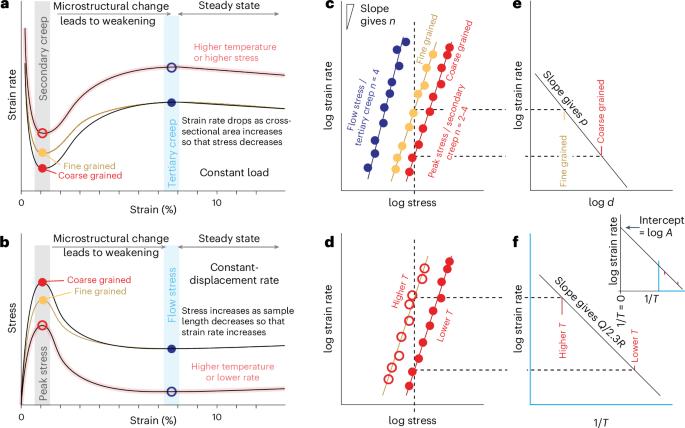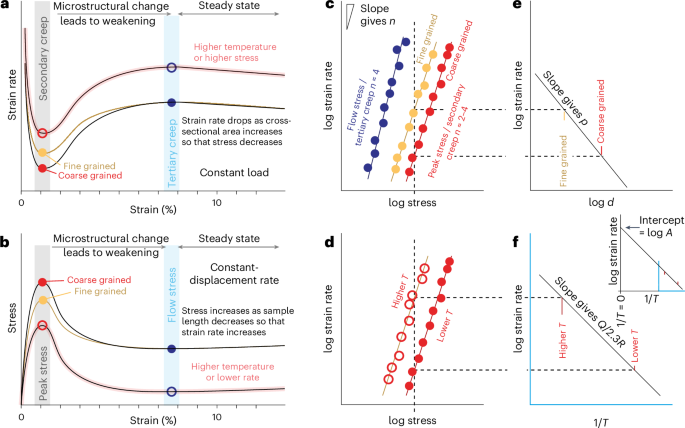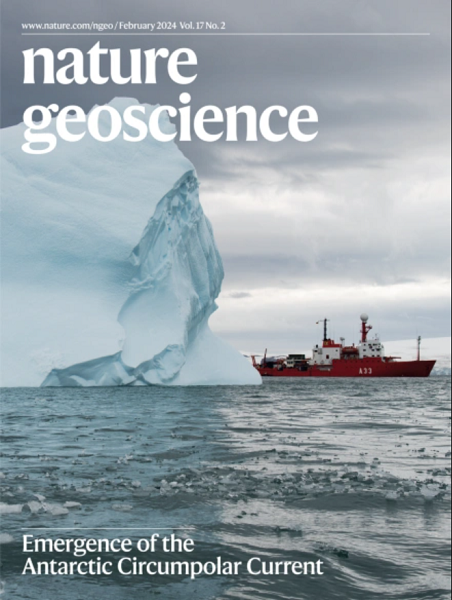70年实验室实验约束下冰的流动规律
IF 16.1
1区 地球科学
Q1 GEOSCIENCES, MULTIDISCIPLINARY
引用次数: 0
摘要
冰的流动规律预测变形(应变)速率,是冰川和冰盖动力学建模的基础。在这里,我们将贝叶斯推理应用于积累超过70年的实验室测量,以约束冰盖建模的流动规律。在低应变下,通常使用的流动定律——从具有狭窄应力、温度和晶粒尺寸范围的单个实验数据集推导而来——无法捕捉冰行为的全部复杂性。我们表明,需要一个综合不同变形机制应变率的多组分流动定律来捕捉在全套实验中观察到的晶粒尺寸和温度敏感性。这种多组分流动规律适用于冰的各向异性较弱或变形运动学不同于形成晶体优选取向的变形运动学,从而使冰更具粘性的自然情况。低应变流动规律,包括这种多组分流动规律,在高应变条件下的有效性有限,在高应变条件下,冰的粘度会发生变化,各向异性会发展,这使得冰的粘性降低。单组分、粒度不敏感的流动规律可以合理地拟合高应变实验数据,并且更适合于模拟大尺度冰盖的流动行为。本文章由计算机程序翻译,如有差异,请以英文原文为准。


Flow laws for ice constrained by 70 years of laboratory experiments
Flow laws for ice predict rates of deformation (strain) and are fundamental to modelling glacier and ice-sheet dynamics. Here we apply Bayesian inference to laboratory measurements accumulated over 70 years to constrain flow laws for ice-sheet modelling. At low strains, commonly used flow laws—derived from individual experimental datasets with narrow stress, temperature and grain-size ranges—fail to capture the full complexity of ice behaviour. We show that a multicomponent flow law that sums strain rates from different deformation mechanisms is needed to capture grain-size and temperature sensitivities observed in the full set of experiments. This multicomponent flow law is applicable to natural scenarios where the anisotropy of ice is weak or where the deformation kinematics differ from those that formed the crystallographic preferred orientation, making the ice more viscous. Low-strain flow laws, including this multicomponent flow law, have limited validity at high strain, where viscosity evolves and anisotropy develops, making ice less viscous. A one-component, grain-size insensitive flow law gives a reasonable fit to high-strain experimental data and is better suited to modelling the large-scale flow behaviour of ice sheets. Experimentally constrained flow laws predict ice-sheet strain rates that differ by an order of magnitude from estimates made using previous flow laws, highlighting the need for accurate flow laws in ice-sheet modelling.
求助全文
通过发布文献求助,成功后即可免费获取论文全文。
去求助
来源期刊

Nature Geoscience
地学-地球科学综合
CiteScore
26.70
自引率
1.60%
发文量
187
审稿时长
3.3 months
期刊介绍:
Nature Geoscience is a monthly interdisciplinary journal that gathers top-tier research spanning Earth Sciences and related fields.
The journal covers all geoscience disciplines, including fieldwork, modeling, and theoretical studies.
Topics include atmospheric science, biogeochemistry, climate science, geobiology, geochemistry, geoinformatics, remote sensing, geology, geomagnetism, paleomagnetism, geomorphology, geophysics, glaciology, hydrology, limnology, mineralogy, oceanography, paleontology, paleoclimatology, paleoceanography, petrology, planetary science, seismology, space physics, tectonics, and volcanology.
Nature Geoscience upholds its commitment to publishing significant, high-quality Earth Sciences research through fair, rapid, and rigorous peer review, overseen by a team of full-time professional editors.
 求助内容:
求助内容: 应助结果提醒方式:
应助结果提醒方式:


